We choose varnish for baths and saunas

The choice of varnish for the sauna or bath should be carried out very carefully, because it is from this solution depends on how long and how effectively the wooden coatings will last. In addition, we should not forget about the need to protect wooden furniture, especially located in the steam room.
Features
Varnish for baths and saunas is extremely important for preserving wooden surfaces. Bathing procedures are accompanied by an increase in both temperature and humidity levels, which, in turn, contributes to the rotting of almost any material. Of all the rooms of the bath the maximum need for protection is present in the steam room, although the treatment of the anteroom will not be superfluous. Particular attention should be paid to the floor of the steam room, which is constantly pouring hot water mixed with detergents, as well as all time exposed to water vapor. Mechanical stress together with high temperatures also contributes to the deterioration of the surface.
Do not forget that without treatment, walls and ceilings often become infested with mold and mildew, the development of which is promoted by high humidity and lack of airing.
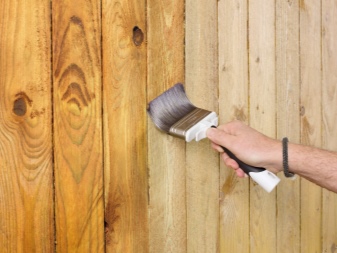
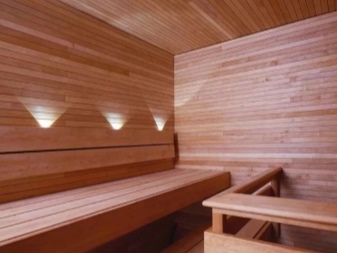
Overview of types
The wood used for the construction and finishing of the bath is required to be treated with various coatings and paints. As a rule, for this purpose, either an acrylic water-based varnish or a water-based preparation or oil-based solution is used.
Acrylic
Special acrylic varnish perfectly copes with the treatment of the walls of the steam room. On the one hand, it repels water and dirt, but on the other hand, it does not clog the pores of the wood. The liquid dries very quickly, leaving no unpleasant odor. The solution includes bioprotective components that prevent the formation of fungi and mold. In addition, you can find polyacrylates and organic solvents in a modern product. After use, the surface forms a beautiful semi-matt gloss that emphasizes the natural beauty of wood.
The product is environmentally friendly and does not harm the health of the occupants. In addition, acrylic varnish is more resistant than the usual water-based product.
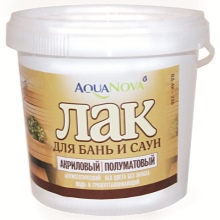
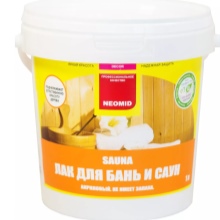
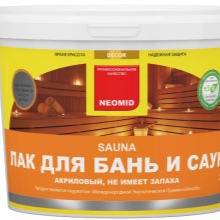
Water-based
Water-based varnishes penetrate deeply into the wood structure. Such impregnation remains resistant for a long period of time despite regular exposure to elevated temperatures. Absence of active chemical components in composition makes heating of treated coatings safe, because no hazardous substances are formed. Solutions can be both transparent and with the addition of a variety of dyes.
The disadvantage of a water-based preparation can be called that for a couple of years it completely evaporates from the wood, and the surfaces require re-treatment.
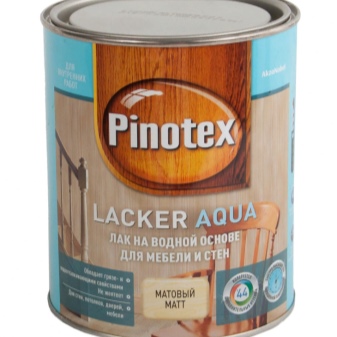
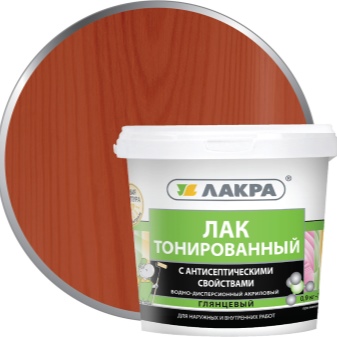
Oil-based
Oil-based impregnations for the bath are quickly absorbed into the wood and effectively repel moisture, but often create a pungent smell. It is not particularly recommended to use them for finishing the steam room, except to protect the outside of the steam room and the anteroom. On the contrary, the product is very good as protection for benches and other furniture.
A water-based polyurethane varnish should also be mentioned. On the market it is a relative novelty, so it is not yet possible to make a clear conclusion about the effectiveness of the product. In addition, sometimes used and impregnations that contain in their composition wax or oliva.

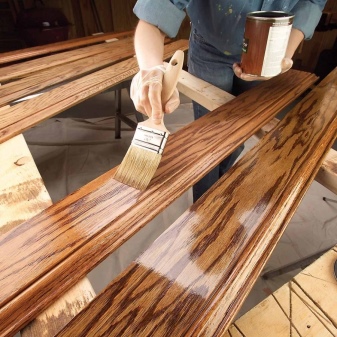
Popular brands
All varnishes for the premises in which water procedures are carried out, and which are sold in the Russian market, can be classified into samples of foreign and local production. The most popular foreign brands include:
- Belinka;
- Tikkurila;
- Dulux.
Of the Russian manufacturers, the most well-known varnishes are:
- Neomid;
- Faktura;
- "Rogneda;
- "Senezh;
- Eurotex.
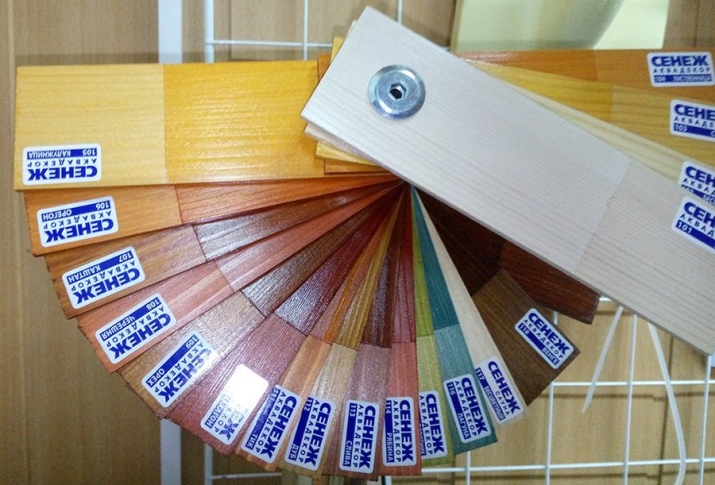
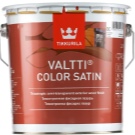
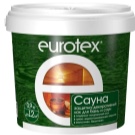
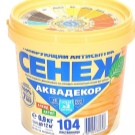

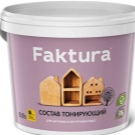
The most popular solutions are Eurotex-Sauna and Neomid-Sauna. The first one, which contains natural wax, perfectly copes with the rejection of dirt and drips. The product can also be used indoors. The composition is neither toxic nor combustible.
Neomid Sauna acrylic varnish dries quickly without creating an unpleasant odor. It allows the wood to "breathe" and even lets its natural fragrance through.
The product does not cause a change in the shade of wood and protects against the appearance of fungus.
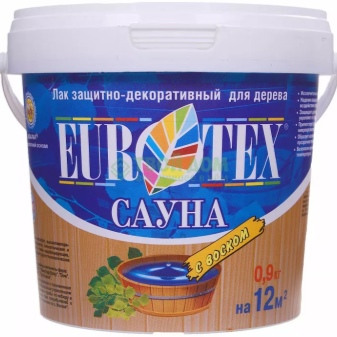
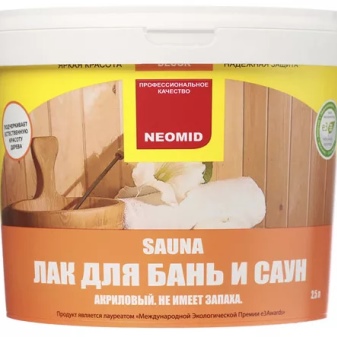
How to choose?
Buying varnish for the bath or sauna, it is necessary to take into account, for which part of the room this means is intended. In addition to this, It is important to understand whether the surface is treated for the first time or repeated coating. If after varnishing wood will need to paint, this factor can also affect the purchase. Do not forget that varnish varieties can be applied to the material to be treated in different ways - with a brush, roller or sprayer. Ordinary varnish is categorically not suitable for use in the steam room because of the dangerous components, pungent odor and special properties. Of course, it should be understood that under the influence of high temperatures regular varnish will release toxic substances that are harmful to health.
You can choose a remedy or imported or domestic production. In both cases, it is better to give preference to proven brands. There are varnishes for processing only the ceiling and for processing only the floor. In addition, there are products for the protection of walls, furniture and surfaces that are in contact with the body.
It is important to remember that if the product is used the wrong way, then condensation will appear on the walls.
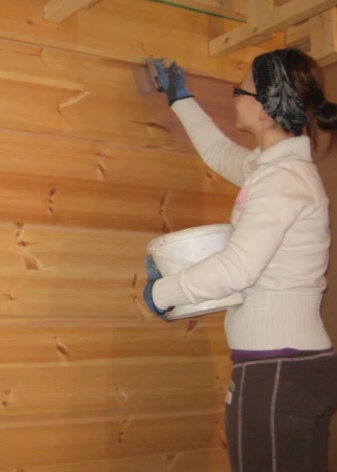
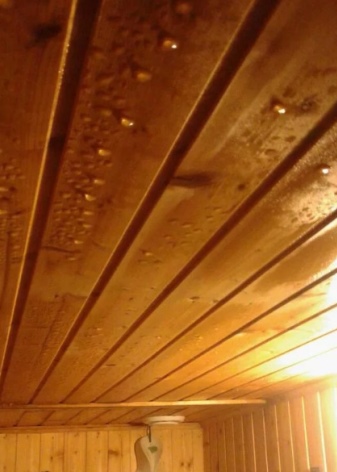
To treat the battens inside the steam room, it is better to take acrylic varnishes for the corresponding rooms on a water basis. For example, The use of Senezh lacquer, which has decontaminating properties, forms a reliable protection on the surfaces that is not afraid of high temperatures. The coating repels dirt and liquids and allows the wood to "breathe". Antimicrobial properties provide protection against pathogenic microorganisms. You can also treat the floor and walls of the steam room with "Neomid" lacquer, which has a water-dilutable acrylic base. Components present in the composition are responsible for protection against dirt, fungus, mold and liquids. The semi-matte gloss preserves and enhances the natural beauty of wood surfaces.
To treat benches and sunbeds, including those in the anteroom, it is wise to coat surfaces with the safest possible composition. It is important that the substance is fully absorbed into the wood without leaving a noticeable sticky film on the surface. Not only will touching it with your bare body be unpleasant, but it is also easy to get a burn or skin irritation. Optimal for benches and shelves are considered oil-based solutions, which are applied with a brush or small sponge. Oil varnish should be completely absorbed into the surface in about two to three hours, and sometimes a couple of days.
To consolidate the result, the bath must be well heated.
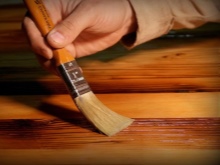
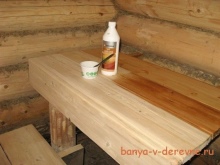
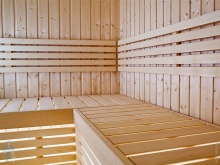
It is worth adding that some sauna connoisseurs believe that the beds and shelves should remain untreated in order to preserve maximum safety, comfort and natural appearance. However, this solution is more suitable for small steam rooms, the furniture is easy to change, but for the expensive large-scale constructions is still better to think through additional protection.
Since the Russian market is practically absent suitable products for floor treatment, it is better to initially settle for heat-treated wood. Such a coating is much less deformable than untreated boards, and it also has initial protection against mold and mildew. It should also be remembered that heat-treated boards are better able to withstand high temperatures. If for the bath is still chosen usual boards, it is recommended to treat them with acrylic impregnation, which prevents the development of pathogenic organisms.
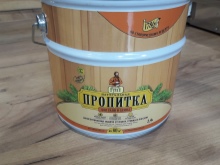
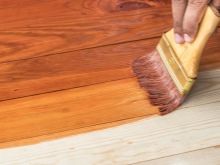
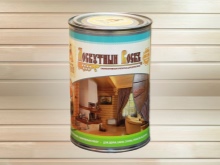
Previously, the surface is covered with antibacterial solution and water impregnation. It is important that the protective layer was not too slippery, and the soles of the feet do not stick to the floor. When building a sauna it is additionally recommended to impregnate the beams with a protective mortar, on which the covering will be put afterwards. If water does get to the beams, the floor of the bath will suffer, despite the existing protection.
In the washing area, if there are ceramic tiles on the floor, they will not need additional protection. If you have a wooden floor, it should be treated with impregnation or paint solutions. Bath coatings made of stone should be protected with a special solution that prevents the growth of fungi, moss and lichen.
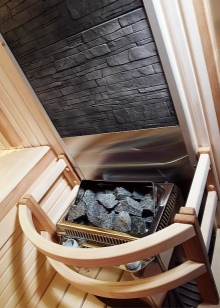
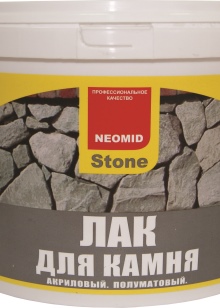
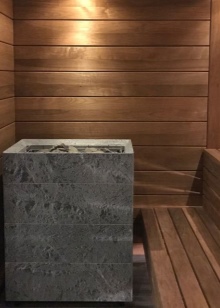
Tips for use
Means for treating benches and other furniture must be applied to a clean and dried surface. It is more convenient to do so with a brush of sufficient width or sponge. After the oil varnish is absorbed and hardens, the bath must be heated. However, at the end of the procedure, you can find drips on the treated surface. You should not worry about this - just carefully remove them with a piece of clean cloth.
Some owners of baths decide for better protection to cover the floor with several coats of varnish. Do this categorically should not be done, as over-lacquered floor begins to crack after a few times of using the room. In addition, if it gets wet, such a floor begins to slip, which is simply not safe for your health.
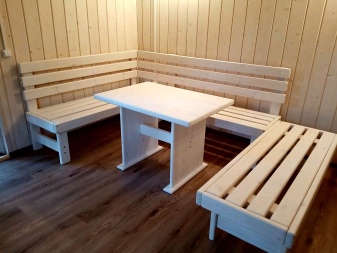
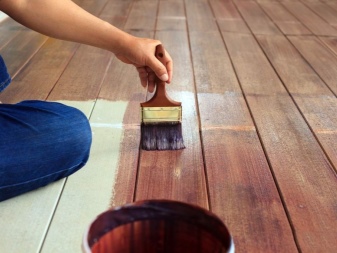
Before applying lacquer, it is best to carry out a series of preparatory work. The surfaces are sanded, cleaned of wood dust, for example, with an ordinary vacuum cleaner, and then degreased with white spirit. The wood must be treated with antiseptic, preferably in two layers, and after they dried varnish is covered. In principle, if the lacquer has antiseptic properties, then the additional use of antiseptic is not required.
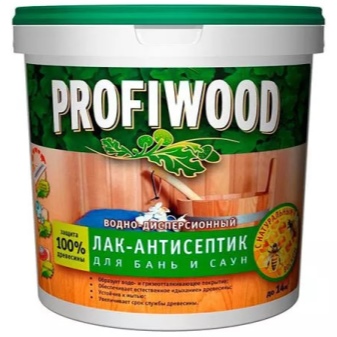
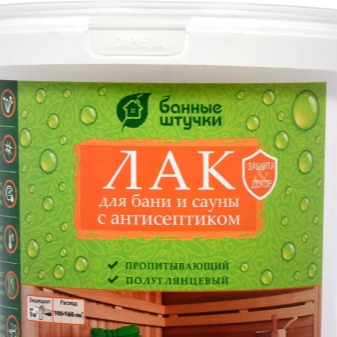
On how to choose a varnish for the bath, see below.




